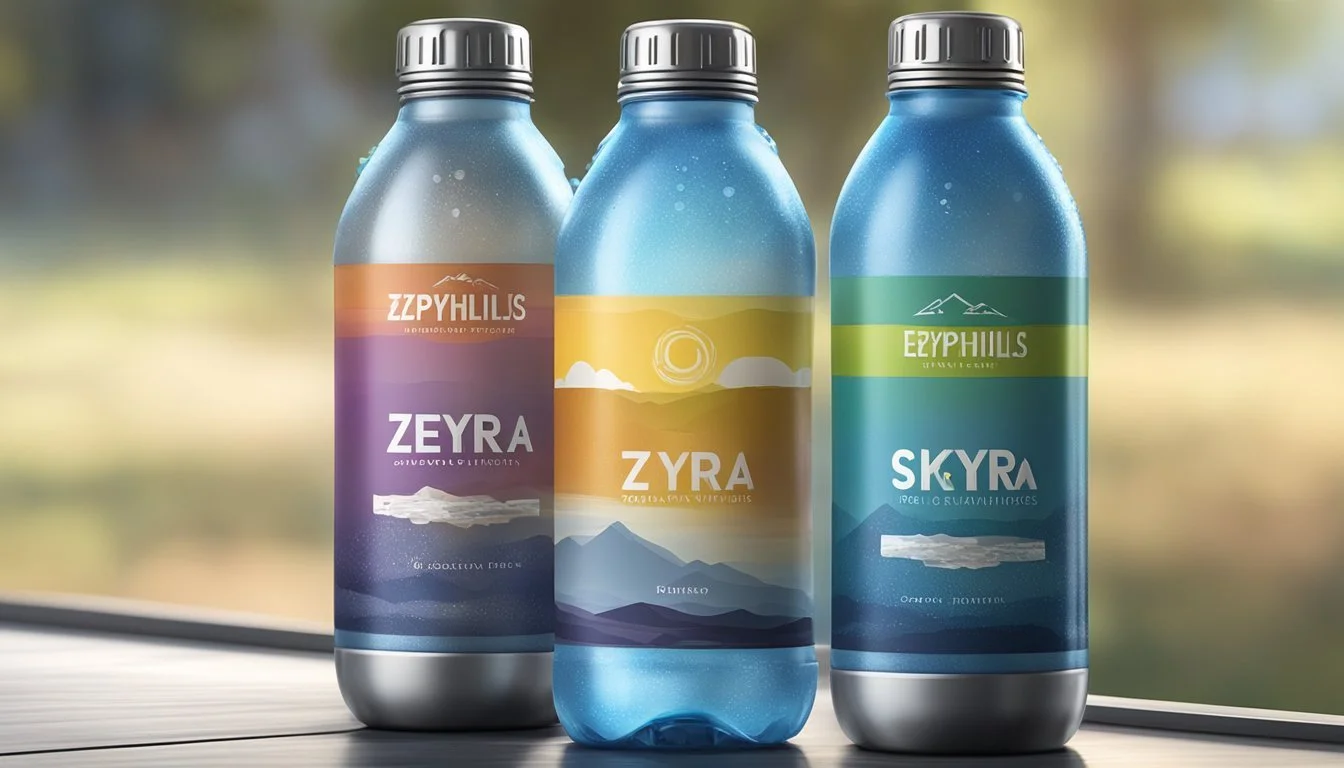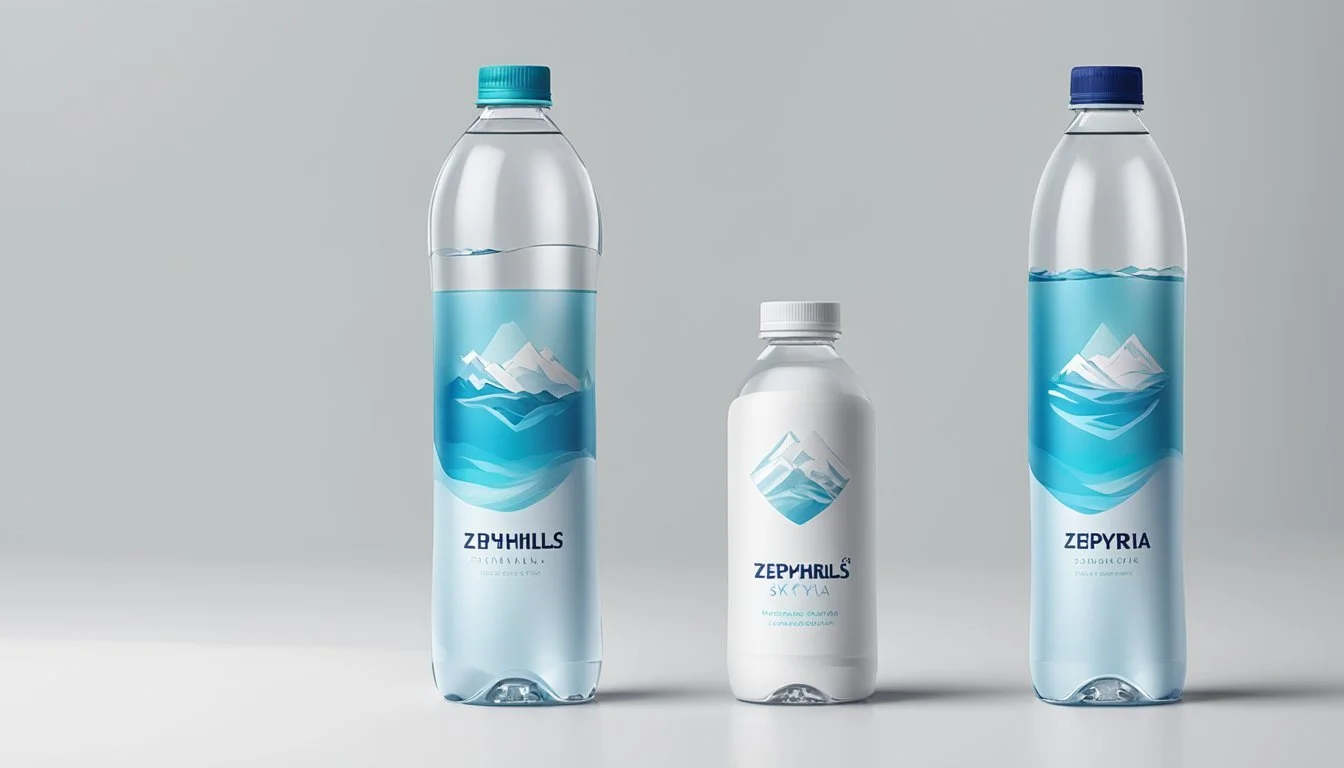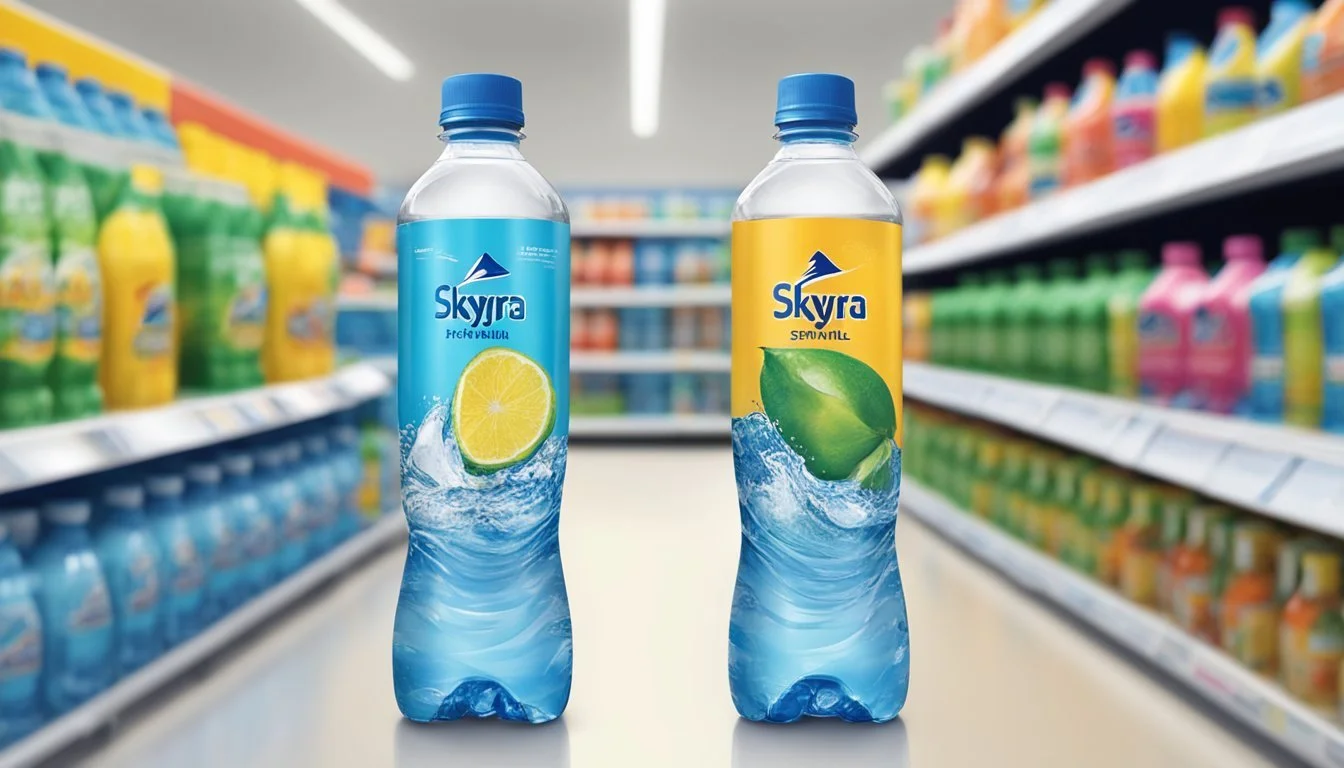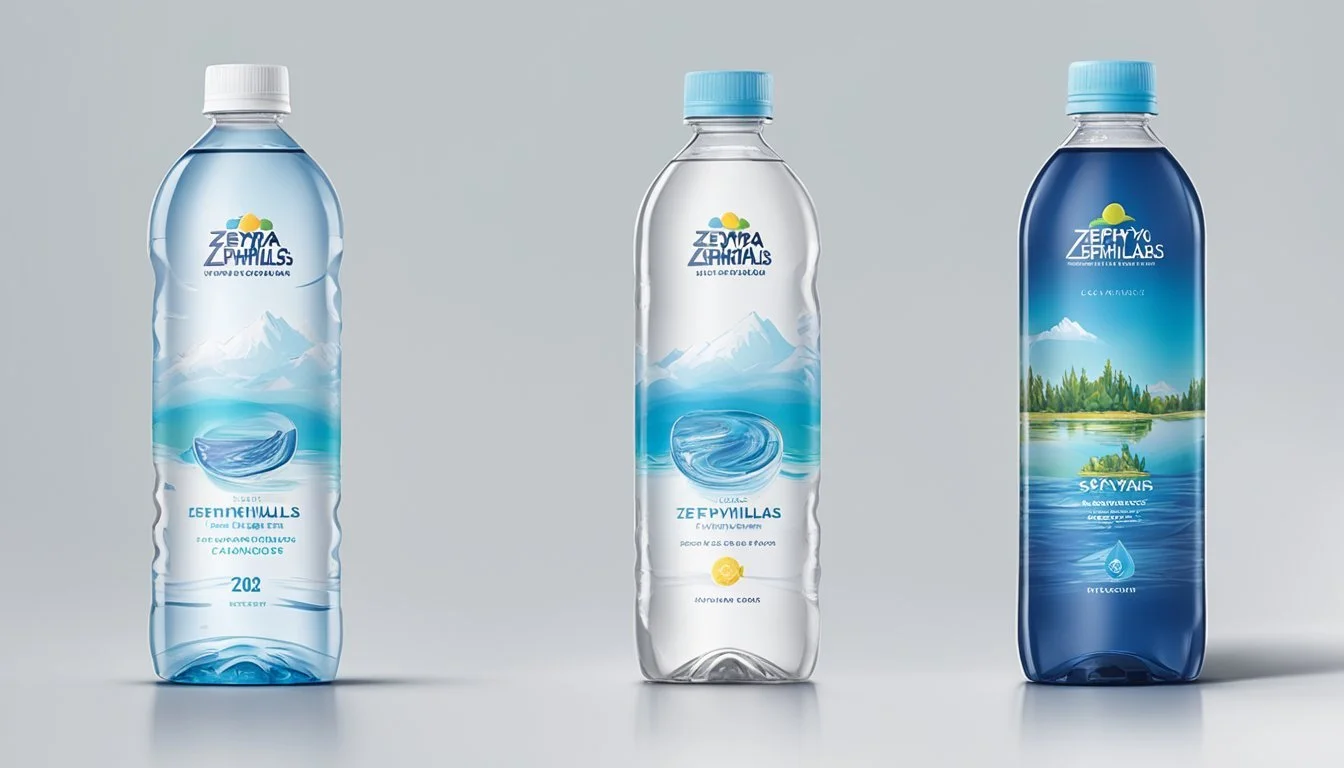Zephyrhills vs. Skyra
Comparing Quality, Taste, and Value
When it comes to selecting bottled water, personal preferences and the quality of the water source play crucial roles. Zephyrhills, sourced from natural springs in Florida, boasts a refreshingly crisp taste that many consumers appreciate. Skyra, on the other hand, offers premium Icelandic glacial water renowned for its purity and unique mineral composition.
Zephyrhills stands out for its straightforward, clean flavor that feels revitalizing, making it a favorite for everyday hydration. In contrast, Skyra's glacial origin gives it a subtly distinct taste that appeals to those seeking a high-end option. While both brands ensure high standards of cleanliness and refreshment, the choice between them often comes down to a preference for either Zephyrhills' classic spring water profile or Skyra's exotic mineral-infused characteristics.
Ultimately, both Zephyrhills and Skyra cater to different tastes and hydration needs, ensuring consumers have quality options. Whether you favor regional spring water or water from far-off glaciers, these brands offer something unique to enjoy.
The Importance of Bottled Water
Hydration is essential for maintaining good health. Bottled water provides a convenient and accessible way to stay hydrated, especially for those with busy lifestyles. With a bottle in hand, individuals can ensure they meet their daily water intake requirements no matter where they are.
Health benefits are another key factor. Bottled water often undergoes rigorous purification processes, ensuring the removal of contaminants. This can be crucial for people living in areas where tap water quality may be questionable. Many bottled waters also contain beneficial minerals and electrolytes that support bodily functions.
Quality is a significant concern for consumers. Brands like Zephyrhills and Skyra offer different qualities that cater to personal preferences. Zephyrhills sources its water from springs in Florida, maintaining a pH level of around 7.0 to 7.6. Skyra, in contrast, offers a higher pH balance of 8, indicating its alkalinity.
The convenience of bottled water cannot be overstated. It is readily available in various sizes, allowing consumers to choose what best fits their needs. This portability makes it a practical choice for travel, exercise, or outdoor activities where access to clean water may be limited.
To sum up, bottled water meets diverse needs through hydration, health, quality, and convenience. Providing clean, safe, and portable water helps individuals maintain their well-being effortlessly.
Comparing the Brands: Background and Market Presence
Zephyrhills and Skyra have distinct histories and market influences. Each brand offers unique attributes that appeal to different consumer segments, impacting their perception and market share.
History and Origin of Zephyrhills and Skyra
Zephyrhills was established in 1964 and is sourced from natural springs in Florida. Florida's natural springs provide a unique, refreshing taste that sets Zephyrhills apart. This brand is well-known in the southeastern United States and emphasizes its commitment to sustainability and community.
Skyra is a newer brand, sourced from the pristine glaciers of Iceland. It entered the market with a focus on purity and natural filtration. Iceland's glacial water is renowned for its low mineral content and crisp quality. Skyra promotes its water as exceptionally pure and naturally alkaline, targeting health-conscious consumers.
Market Influence and Consumer Perception
Zephyrhills enjoys strong regional loyalty, particularly in the southeastern U.S. Its long-standing presence fosters trust and brand recognition. Consumers associate Zephyrhills with reliability and local heritage, contributing to its enduring popularity.
Skyra, in contrast, has made a significant impact with its premium positioning. The brand markets itself as a luxury option, appealing to consumers who prioritize natural purity and wellness benefits. Skyra's Icelandic origin adds a sense of exclusivity and appeal, attracting a niche but dedicated consumer base.
Both brands have established distinct reputations in the bottled water market, each with a committed group of consumers who appreciate their unique attributes.
Water Quality and Purity
Zephyrhills and Skyra are two renowned bottled water brands, each with distinct sources and processes that contribute to their water quality and purity. This section examines their natural filtration methods and the standards they adhere to in bottling.
Source and Natural Filtration
Zephyrhills sources its water from natural springs primarily located in Florida. These springs are known for their mineral-rich content, providing natural filtration through layers of earth and sand. This process enhances water purity and mineral balance, contributing to its renowned taste.
Skyra sources water from Iceland, utilizing glacial melt and underground springs. The water undergoes natural filtration through volcanic rocks, known to remove impurities effectively. The unique geology imparts a naturally high level of clarity and purity to the water.
Both brands leverage natural filtration techniques that eliminate many common contaminants, ensuring high-quality spring water.
Bottling Methods and Safety Standards
Zephyrhills adheres to stringent safety standards regulated by the FDA. The bottling process includes regular testing for contaminants such as bacteria and industrial pollutants, ensuring the water maintains its purity. Additionally, each batch undergoes mineral composition analysis to guarantee consistent quality.
Skyra also follows rigorous compliance with European and U.S. safety standards. The water is bottled at the source to minimize contamination risks. Advanced technologies are employed to maintain natural pH levels and mineral content, offering consumers high-quality purified water that meets international safety criteria.
Both brands ensure their bottling methods uphold the highest safety standards, delivering safe and pure bottled water.
Health and Hydration Analysis
Zephyrhills and Skyra are popular choices in the bottled water market, each offering distinct health benefits and hydration effectiveness. Their mineral content and purification processes significantly impact these factors.
Mineral Content and Health Benefits
Zephyrhills sources its water from Florida springs and employs a rigorous purification process including micro-filtration, ozone disinfection, reverse osmosis, and UV treatment. This ensures a clean product with a notable mineral content. Beneficial minerals present in Zephyrhills water, such as calcium and magnesium, contribute to bone health and metabolic function.
Skyra is an Icelandic water known for its natural filtration through volcanic rocks, resulting in a high mineral content, particularly silica. Silica is celebrated for its skin and hair benefits. Skyra also contains other essential minerals like potassium and sodium, which are vital electrolytes aiding in various bodily functions.
Attribute Zephyrhills Skyra Source Florida Springs Icelandic Springs Key Minerals Calcium, Magnesium Silica, Potassium Health Benefits Bone Health, Metabolism Skin, Hair Health
Hydration Effectiveness of Zephyrhills vs. Skyra
Zephyrhills offers efficient hydration due to its balanced mineral composition and purity. It provides essential electrolytes, ensuring the body can maintain necessary fluid balance and muscle function. The taste profile, often described as crisp and clean, encourages adequate water intake.
Skyra excels in hydration due to its high mineral content, particularly the electrolytes like potassium and sodium. These elements are pivotal in maintaining hydration levels, especially during physical activity. The presence of silica also enhances the overall hydration quality and experience by supporting connective tissue health.
In terms of hydration, the choice between Zephyrhills and Skyra may depend on personal preference for taste and specific mineral needs. Both brands offer superior hydration, making them excellent options for staying properly hydrated and maintaining overall health.
Electrolyte Content Comparison:
Zephyrhills: Moderate levels of calcium and magnesium.
Skyra: High levels of potassium and sodium, with additional silica benefits.
Taste Profile
Zephyrhills and Skyra are popular bottled water brands that offer distinct taste experiences. Customers have their individual preferences shaped by the subtle nuances of flavor and mineral content of each brand.
Flavor Distinctions
Zephyrhills is known for its clean and refreshing taste, which can be attributed to the natural sources in Florida. It balances mineral content, such as calcium and magnesium, which adds a subtle crispness and enhances drinking pleasure. The pH level of Zephyrhills water typically ranges from 7.0 to 7.6, offering a slightly alkaline profile that many find satisfying without being overpowering.
Skyra, on the other hand, is sourced from Iceland's Ölfus Spring. Its flavor is often described as exceptionally pure and smooth. The unique volcanic filtering process imparts a soft mouthfeel without any aftertaste. The mineral content, including silica, gives Skyra a distinct smoothness that is different from Zephyrhills. This brand's balanced pH level plays a significant role in its clean finish.
Consumer Taste Preferences
When it comes to preferences, consumers who favor mineral-rich water often lean towards Zephyrhills. The mild tang and mineral notes appeal to those seeking a distinctive flavor when hydrating. This brand is also appreciated by individuals who prefer slightly alkaline water, which some believe has additional health benefits.
Skyra tends to attract consumers looking for exceptional purity and a neutral taste profile. Its smooth texture and lack of aftertaste provide a crisp and clean drinking experience. People generally choose Skyra for its softness and the blend of minerals that create a unique, almost silky quality, differentiating it from other bottled waters.
In conclusion, while some prefer the pronounced mineral taste of Zephyrhills, others might opt for the smooth, pure quality of Skyra. The choice often depends on individual taste preferences and what one values in their drinking water.
Environmental Sustainability
Both Zephyrhills and Skyra focus on minimizing their environmental impact through sustainable practices and materials. Here’s how each brand approaches the challenge.
Bottle Materials and Environmental Impact
Zephyrhills uses recyclable plastic for its bottles, with a significant portion made from recycled PET (rPET). This reduces the need for virgin plastic, lowering the carbon footprint associated with production.
Skyra, on the other hand, emphasizes its use of lightweight bottles to decrease transportation emissions. Their bottles are also made from recyclable materials, although the brand often highlights its commitment to reducing overall plastic use.
Plastic waste is a concern for both, and both brands strive to ensure their bottles are easily recyclable to mitigate environmental harm. Despite differences, both companies show dedication to using more sustainable materials in their products.
Sustainability Measures by Brand
Zephyrhills has implemented various initiatives to support local communities and natural springs. They work on protecting water sources and ensure a sustainable water use policy.
Skyra focuses on using naturally filtered water from Iceland, which has a minimal treatment process. They advocate for environmental sustainability by maintaining high purity levels in their water, though this aspect is more about water quality than environmental protection.
Both brands aim to decrease their carbon emissions through different strategies. While Zephyrhills engages in community-focused efforts, Skyra leans into natural resource preservation. Each brand's approach caters to reducing their environmental footprint while maintaining product quality.
Packaging and Convenience
Zephyrhills and Skyra both offer varied packaging options and differ in their accessibility and availability. These factors impact consumer ease of use and purchasing convenience.
Varieties of Packaging Options
Zephyrhills provides a diverse range of packaging choices. Consumers can find plastic bottles in various sizes, ideal for portability. They also offer larger plastic jugs, which are convenient for families or groups. In some markets, glass bottles are available for those seeking an eco-friendlier option.
Skyra, marketed as a premium brand, predominantly offers glass bottles. This aligns with their high-end branding, but they also provide select products in plastic bottles for convenience. However, their offerings are less diverse compared to Zephyrhills when it comes to packaging formats.
Accessibility and Availability
Zephyrhills is widely accessible across the United States. It is available in most grocery stores, supermarkets, and convenience stores. This broad availability ensures that the product can be easily obtained by consumers throughout the country. Online purchasing options also make it convenient for consumers to buy in bulk.
Skyra has a more limited distribution network, focusing primarily on premium retail locations and specialty stores. This brand is also available online but may not be as easily found in regular supermarkets. This limited availability can limit convenience for some potential customers.
Both brands provide packaging that caters to different consumer needs, whether one prioritizes eco-friendly options or broad accessibility.
Regulatory Compliance
Both Zephyrhills and Skyra bottled waters are subject to strict regulations to ensure safety and quality.
FDA Regulations:
The Food and Drug Administration (FDA) oversees bottled water in the United States. Bottled water, including Zephyrhills and Skyra, must comply with the FDA’s standards for water quality, labeling, and manufacturing practices.
Safety Standards:
Zephyrhills adheres to regulatory standards that match those of the Environmental Protection Agency (EPA) for tap water. This includes regular testing to meet chemical and microbial safety standards.
Skyra also complies with FDA regulations, ensuring that the water is free from contaminants and safe for consumption. It undergoes rigorous testing to meet both chemical and microbial safety benchmarks.
Labeling Requirements:
Both brands must accurately label their products with information regarding water source, ingredient contents, and if any treatments have been applied. This helps consumers make informed choices.
Inspection and Compliance:
Regular inspections and testing are conducted to ensure that both Zephyrhills and Skyra meet federal and state regulations. Failure to comply can result in fines, recalls, or mandatory corrective actions.
The consistent adherence to these regulatory frameworks ensures that both Zephyrhills and Skyra deliver safe and high-quality bottled water to consumers.
Future Trends in Bottled Water
The bottled water market is evolving swiftly, driven by changes in consumer preferences and global trends.
Sustainability is at the forefront of the industry. Consumers are increasingly demanding eco-friendly packaging. Brands are investing in biodegradable and recyclable materials, and some are shifting towards plant-based bottles.
Innovations in filtration and mineralization are becoming more sophisticated. Water brands are exploring advanced purification processes and unique mineral compositions to attract health-conscious consumers. Alkaline and functional waters are also gaining popularity for their perceived health benefits.
According to Statista, the functional bottled water market may surpass $5 billion soon. This growth is supported by increasing awareness of health and wellness, making products like vitamin-infused and electrolyte-enhanced waters more appealing.
Consumer trends also indicate a growing preference for local and sourced waters. People are looking for transparency about the origin and quality of the water they consume. This has led to an emphasis on sourcing from pristine, natural springs.
Brands like Zephyrhills focus on sourcing from Florida's springs, while others like Skyra emphasize the benefits of alkaline water. These distinct positioning strategies cater to niche markets, likely to expand as consumer preferences diversify.
The integration of smart technology in packaging is another emerging trend. Intelligent labels that provide information about the product and its journey from source to bottle are becoming popular.
In summary, the bottled water market is set for significant transformations driven by sustainability, innovative processes, and evolving consumer demands.
More About Zephyrhills
Core Hydration vs Zephyrhills: Which Bottled Water is Better?
Icelandic Glacial vs Zephyrhills: Which Bottled Water is Better?
Mountain Valley Spring Water vs Zephyrhills: Which Bottled Water is Better?
Nestle Pure Life vs Zephyrhills: Which Bottled Water is Better?
Poland Spring vs Zephyrhills: Which Bottled Water is Better?
San Pellegrino vs Zephyrhills: Which Bottled Water is Better?
Zephyrhills vs Aqua Carpatica: Which Bottled Water is Better?
Zephyrhills vs Cascade Mountain: Which Bottled Water is Better?
Zephyrhills vs Crystal Geyser: Which Bottled Water is Better?
Zephyrhills vs Hawaii Volcanic: Which Bottled Water is Better?
Zephyrhills vs Hawaiian Springs: Which Bottled Water is Better?
Zephyrhills vs Kirkland Signature: Which Bottled Water is Better?
Zephyrhills vs Purely Sedona: Which Bottled Water is Better?
Zephyrhills vs Richard's Rainwater: Which Bottled Water is Better?
Zephyrhills vs Solan de Cabras: Which Bottled Water is Better?
Zephyrhills vs Talking Rain AQA: Which Bottled Water is Better?
Zephyrhills vs Whole Foods 365: Which Bottled Water is Better?
Zephyrhills vs Whole Foods Italian Still Mineral water: Which Bottled Water is Better?








